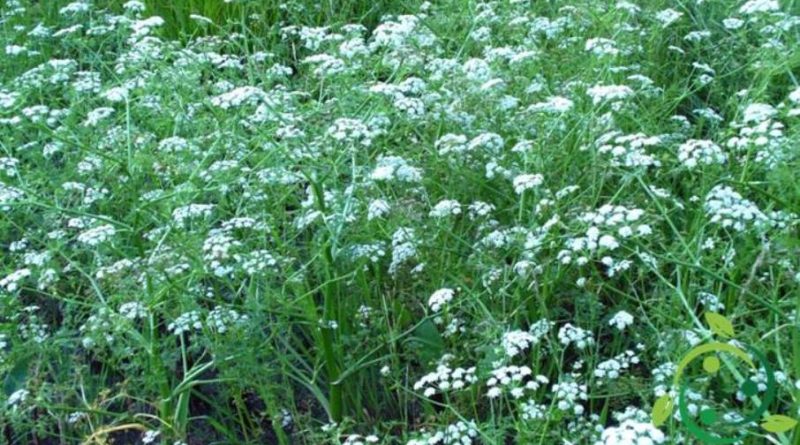Properties and uses of Fellandrio
Properties and uses of Fellandrio
The Fellandrio or aquatic fennel cicutario (Oenanthe aquatica (L.) Poir., 1798) is a perennial herbaceous species of the Apiaceae family; it is a hairless plant that can reach from 50 cm up to 2 m, with caulas often prostrate, furrowed, fistulous, empty inside and very branchy, carrying in the lower nodes very thin and adventitious roots. Door of the leaves that are 2-3 times pennatosette, with the inferior ones, in the water, to lacinie capillaries and the superior ones, out of the water, to oval segments, engraved dentate. The flowers are in umbrellas with short peduncle, mostly lateral and opposite to the leaves with 7-10 gracil and striated rays without shell and with envelopes composed of several linear bracts. The calyx is with 5 accretive and persistent teeth in the fruit and 5 unequal white petals obovate and emarginated with curved apex; the stamens are longer than the petals.
The antesis is between May and June.
The fruit, brown in color, is 3.5-4.5 mm thick, often curved, with 1 mm styles. It has an unpleasant smell.
The plant can be found in habitats near ditches, springs, swampy areas, etc. from the sea level up to 1000 m. s.l.m.
The seeds of the aquatic fennel contain: ethereal oil, difellandrene, bifellandrene, androlo, fellandrale, galattano, mannano, resins, other waxy and gummy substances.
Attention because, the whole fresh plant is poisonous, while if dried it is harmless.
In homeopathy, seeds with cough properties are used and to reduce bronchial catarrh.
In general, the organs or functions involved in the phytotherapeutic action of the aquatic fennel are: bronchi and bronchioles, intestine, nasal mucosa, digestive organs, organs and or tissues of various body districts, excretory organs, kidneys, immune system, enteric nervous system, tube gastro-enteric, respiratory tract and urinary tract.
As for the properties and indications that can be obtained from this plant are: bronchitis or bronchial affections, carminative – antifermentative, diaphoretic or sudoriferous, diuretic, fluidizing expectorant of mucolytic catarrh, flu, flatulence meteorism and intestinal fermentations, cough, convulsive coughs and whooping cough , cough-resistant.
For the characteristics and toxicity of this plant each use must be subjected to the prior medical opinion.

